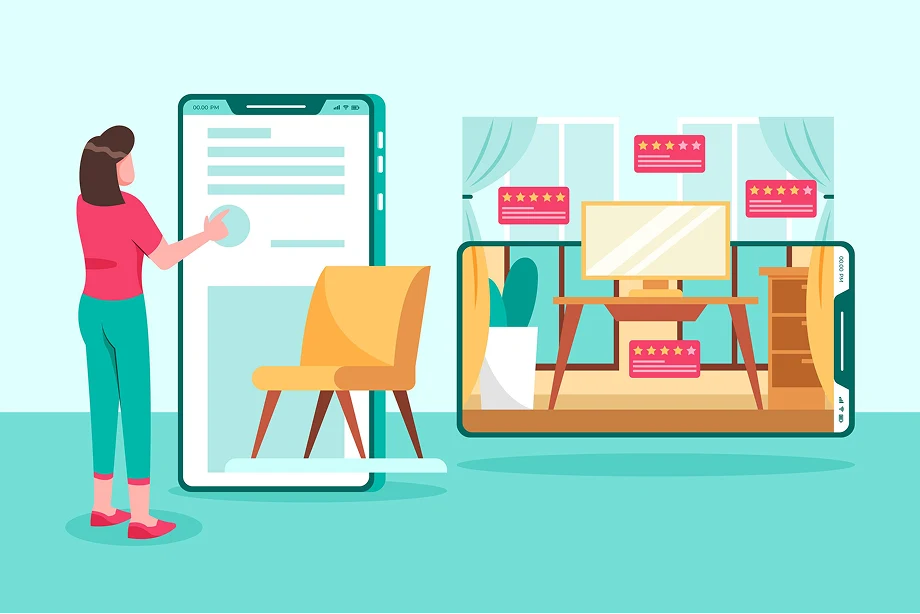AI Insights, Real Stories, and Game-Changing Guides for the Next-Gen Furnishing Professional.
In the furnishing, interiors, and furniture business, projects often involve multiple stakeholders: interior designers, furniture makers, suppliers, subcontractors, logistics partners, and clients. One of the biggest pain points is miscommunication, delays, mismatched expectations, or data silos between designers and suppliers. A well-implemented furnishing ERP system can bridge these gaps and make collaboration seamless.
Let’s explore how a furnishing ERP system—especially one tailored for the industry like LetMeFurnish—can significantly improve the working relationship between designers and suppliers.
The challenge: fragmented workflows and communication gaps
Before diving into the solution, it’s useful to understand typical challenges:
- Data silos & document duplication: Designers maintain their own spec documents, furniture order lists, material/finishes charts, etc., while suppliers have separate spreadsheets for inventory, lead times, pricing, and purchase orders. Reconciling both can be error-prone.
- Specification mismatches: Designers might request a wood finish, material type, or dimension that a supplier doesn’t support, causing back-and-forth clarifications.
- Delay in feedback loops: If a supplier is delayed or cannot deliver an item, that information might not reach the designer in time, impacting project timelines.
- Version confusion: Multiple versions of drawings or BOM (bill of materials) can create confusion — which version is most up-to-date?
- Lack of visibility: Designers often don’t have visibility into the supplier’s inventory status, lead times, or constraints, making planning difficult.
- Manual coordination overhead: A lot of coordination happens via e-mail, phone, or even WhatsApp, which is decentralized and hard to audit.
A furnishing ERP system addresses these issues by centralizing, standardizing, and automating communication and workflows.
What is a Furnishing ERP System?
A furnishing ERP system is an enterprise resource planning solution tailored to the needs of the furniture, interior, and décor supply chain — designed to manage design specifications, purchase orders, inventory, quotations, delivery schedules, project billing, and more, all in one integrated platform.
LetMeFurnish is a furnishing operations and project management app that acts as a furnishing ERP system: it provides real-time project tracking, quotation generation, task and delivery management, supplier coordination, and financial workflows all in one place.
Because it is built for furnishing operations, the system understands domain-specific workflows: e.g. materials, finishes, custom orders, modular components, site logistics, etc.
How collaboration improves: Key enablers in a furnishing ERP system
Here are the main ways a furnishing ERP system helps designers and suppliers collaborate more effectively:
1. Unified data & centralized specifications
Instead of separate files or email attachments, the system hosts the single source of truth — project drawings, BOMs, material choices, specifications, finishes, and change requests all live in one platform.
Designers can attach design specs, 3D render references, finishes, etc., and suppliers can access and respond to them. Both parties stay in sync on what exactly needs to be manufactured or delivered.
2. Real-time visibility into supplier constraints
Suppliers can expose their real-time inventory, lead times, capacity constraints, and order commitments within the system. Designers can see this status at glance (e.g. stock levels, expected supply delays).
With this transparency, designers can adapt their proposals or select alternate materials or vendors proactively, without waiting for manual feedback loops.
3. Automated change management & approval workflows
Design changes are inevitable. A furnishing ERP system supports structured change orders: when a designer revises a spec, the change request goes through approval workflows, notifying supplier(s). Suppliers can respond (accept, reject, request more info). Only approved changes propagate to manufacturing or procurement.
This avoids “silent changes” or version mismatches.
4. Integrated quoting and purchase order linkage
Designers often propose furniture sets or décor items, which need to be quoted by suppliers. In a furnishing ERP, quotations and POs are linked back to design elements. Suppliers submit quotes, designers accept or negotiate, and approved quotes seamlessly turn into purchase orders. LetMeFurnish enables instant quote generation and links those quotes to projects. letmefurnish.com
5. Task & milestone coordination
Designers and suppliers can both see project milestones, delivery schedules, site installations, etc. The system can send automated reminders, track tasks (e.g. finishing, packaging, dispatch), and flag delays or dependencies.
Because both parties are using the same timeline, misalignment and finger-pointing are reduced.
6. Document, image, and quality feedback exchange
Suppliers can upload images of prototype samples, finishing mocks, or quality checks. Designers can respond with comments, mark up images, or request revisions. These interactions are logged in the system for traceability.
7. Analytics, performance tracking & transparency
Over time, metrics like supplier delivery reliability, defect rates, turnaround times, cost variance, and communication lag can be tracked. These KPIs strengthen accountability and help both parties improve.
8. Mobile & cloud access
LetMeFurnish is cloud-based and mobile-friendly, so designers or suppliers working remotely, on site, or traveling can still engage with the system. Real-time updates are accessible anywhere.
Scenario: A sample collaboration flow using LetMeFurnish
Let’s walk through a hypothetical example:
At each point, both sides see the same data, actions, and history — reducing ambiguity or misalignment.
Benefits: Why this matters
- Faster response & fewer corrections: Since both parties always see up-to-date specs, fewer back-and-forth clarifications are needed.
- Reduced errors & rework: Version control and change approval workflows reduce mistakes.
- Improved trust & accountability: With traceable logs, both designers and suppliers have clarity about who did what, when.
- Better planning & contingency: Designers can plan projects more realistically by knowing supplier constraints upfront.
- Scalable operations: As your furnishing business grows (more projects, more supplier relationships), the collaboration overhead remains manageable.
- Cost control: You avoid hidden costs from miscommunication, delays, rework, or overruns.
Tips for successful adoption
- Onboard both sides: Ensure that suppliers are willing and trained to use the furnishing ERP system. Collaboration only works if both parties adopt it.
- Define roles & access controls: Not all parties need full access. Define permissions (designer can edit specs, supplier can quote/approve, etc.).
- Maintain a supplier directory: Pre-approved vendors with standard catalogs, pricing tiers, and performance history help streamline new collaborations.
- Standardize templates & spec libraries: Use material/finish libraries, modular components, and standard templates to reduce ambiguity.
- Use alerts & notifications: Prompt stakeholders when tasks or approvals are pending.
- Monitor KPIs and feedback loops: Regularly review collaboration metrics (delays, quality feedback, revision cycles) to improve processes.
Conclusion
In the modern furnishing and interior industry, seamless collaboration between designers and suppliers can make or break project success. A dedicated furnishing ERP system like LetMeFurnish becomes the backbone of this collaboration — centralizing communication, reducing friction, improving visibility, and aligning all parties toward the same goals.
If your furnishing business still relies heavily on spreadsheets, email chains, or separate tools for designers and suppliers, you may already be losing time, trust, and profit. LetMeFurnish’s integrated furnishing ERP system offers a lean yet powerful platform to bring everyone onto the same page and transform how you deliver beautiful, functional spaces.





